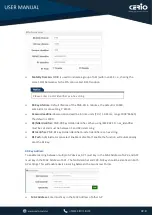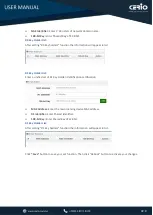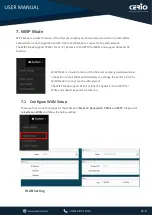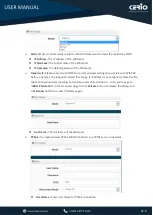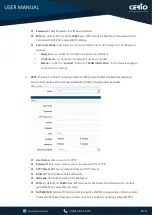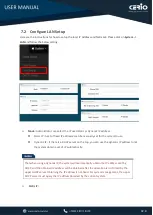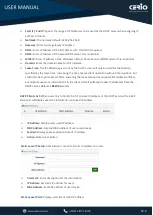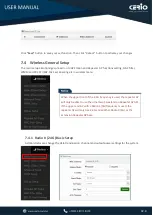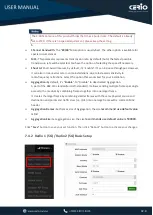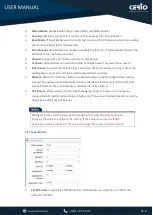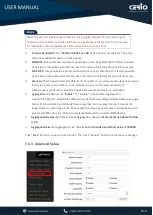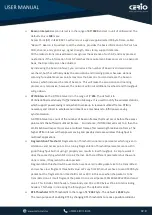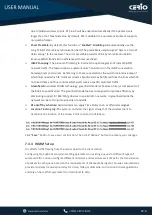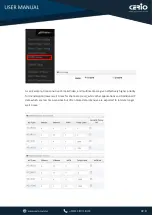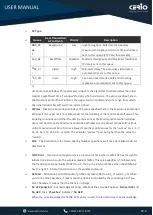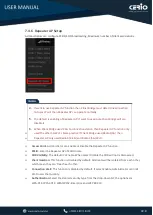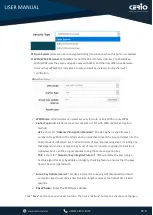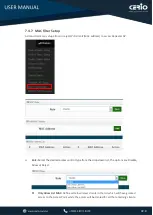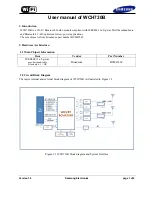
V2.0
Channel Bandwidth:
The "
20/40 and 802.11ac 80
” MHz option is usually best. The other
option is available for special circumstances.
MIN MCS:
This parameter represents transmission rate. By default (4) the fastest possible
transmission rate will be selected. You have the option of selecting the speed if necessary.
MAX MCS:
This parameter represents transmission rate. By default (9) the fastest possible
transmission rate will be selected. You have the option of selecting the speed if necessary.
Shout GI:
Short Guard Interval, by default, it's “Enable”. it's can increase throughput. However,
it can also increase error rate in some installations, due to increased sensitivity to
radio-frequency reflections. Select the option that works best for your installation.
Aggregation:
By default, it's “
Enable
”. To “Disable” to deactivated Aggregation.
A part of the 802.11n standard(or draft-standard). It allows sending multiple frames per single
access to the medium by combining frames together into one larger frame. It creates the
larger frame by combining smaller frames with the same physical source and destination end
poi
nts and traffic class (i.e. QoS) into one large frame with a common MAC header.
Aggregation Frames:
Set frames size of Aggregation, the size
recommend use default value
is 32.
Aggregation Size:
Set aggregation size, the size
recommends use default value is 500000.
Click
“Save”
button to save your set function. Then click “Reboot” button to activate your changes.
7.4.3
Advanced Setup
When the device's wireless signal requires only a single antenna 1T1R, the main signal
output location is ANT1, and ANT2 will have no signal output. Please refer to the manual
1.1 "Device & Antenna appearance of the action position when 1T1R.
Summary of Contents for SEFA OW-500 A1
Page 75: ...V2 0 ...
Page 146: ...V2 0 ...

